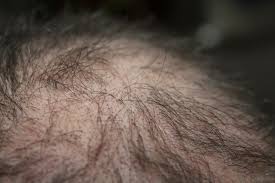Introduction:
Baldness in women, also known as female pattern hair loss (FPHL) or androgenetic alopecia, is a condition characterized by the progressive thinning of hair in a specific pattern. While baldness is commonly associated with men, it affects a significant number of women as well, albeit in a different pattern. Understanding the reasons, prevalence, preventive measures, and available treatments is crucial for managing and addressing this condition.
Causes of Baldness in Women:
- Genetics:
- Like in men, genetics plays a crucial role in female pattern hair loss. If there’s a family history of baldness, women are more likely to experience it themselves.
- Hormonal Changes:
- Hormonal fluctuations, especially during puberty, pregnancy, and menopause, can contribute to hair thinning. Elevated levels of androgens (male hormones) can lead to hair loss.
- Medical Conditions:
- Certain medical conditions such as polycystic ovary syndrome (PCOS), thyroid disorders, and autoimmune diseases can contribute to hair loss in women.
- Nutritional Deficiencies:
- Inadequate intake of essential nutrients like iron, zinc, and vitamin D can affect hair health and contribute to hair loss.
- Stress:
- Chronic stress can disrupt the normal hair growth cycle, leading to increased shedding and thinning of hair.
Prevalence of Baldness in Women:
Baldness in women is more common than often perceived. According to studies, up to 40% of women may experience some degree of hair loss by the age of 50. However, the prevalence increases with age, and it can start as early as the late teens or early 20s.
Preventive Measures:
- Healthy Lifestyle:
- Adopting a healthy lifestyle, including a balanced diet, regular exercise, and adequate sleep, can contribute to overall well-being and may positively impact hair health.
- Manage Stress:
- Incorporating stress management techniques such as meditation, yoga, or counseling can help mitigate the effects of chronic stress on hair.
- Avoid Excessive Heat and Styling:
- Excessive use of heated styling tools and harsh chemical treatments can damage hair and contribute to hair loss. Limiting such practices can promote healthier hair.
- Regular Scalp Care:
- Maintaining a clean and healthy scalp is crucial. Regular washing and gentle massage can improve blood circulation and support hair health.
Treatment Options:
- Topical Minoxidil:
- Minoxidil is an FDA-approved over-the-counter topical medication that has shown efficacy in promoting hair growth. It is applied directly to the scalp.
- Prescription Medications:
- Some prescription medications, such as spironolactone and finasteride, may be prescribed by a healthcare professional to address hormonal factors contributing to hair loss.
- Platelet-Rich Plasma (PRP) Therapy:
- PRP therapy involves drawing a small amount of the patient’s blood, processing it to concentrate platelets, and then injecting the PRP into the scalp to stimulate hair growth.
- Hair Transplantation:
- In cases of advanced hair loss, hair transplantation procedures may be considered to transplant healthy hair follicles from one part of the scalp to the affected areas.
Conclusion:
Baldness in women is a multifaceted condition influenced by genetic, hormonal, and environmental factors. While complete prevention may not be possible, adopting a healthy lifestyle, managing stress, and seeking timely medical intervention can help manage and mitigate the effects of female pattern hair loss. A personalized approach, considering the underlying causes, is crucial in determining the most effective treatment options for individual cases. Consulting with a healthcare professional or a dermatologist is recommended for a thorough evaluation and appropriate guidance.
Keywords:
- Female Pattern Hair Loss
- Androgenetic Alopecia
- Women’s Hair Health
- Preventive Measures for Hair Loss
- Treatment Options for Baldness in Women
- Genetic Factors in Female Hair Loss
- Hormonal Influences on Hair Thinning
- Lifestyle and Hair Wellness
- Innovative Hair Care Solutions
- Empowering Confidence Through Healthy Hair



